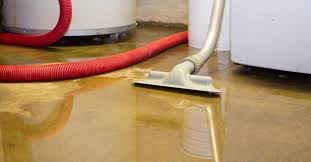Fact: Raw sewage contains over 1,000 types of disease-causing bacteria, making prompt cleanup essential for health and safety.
A backed-up sewer line or overflowing toilet brings not just water but hazardous waste into your home. Professional sewage removal & cleanup ensures contaminated water and solids are removed safely, preventing illness and long-term damage. Here’s a people-first guide to managing sewage incidents properly.
1. Evacuate And Ventilate Affected Areas
At the first sign of sewage backup, clear people and pets from the zone. Open windows and run exhaust fans to reduce odors and airborne pathogens. Post “Keep Out” signs on contaminated areas to prevent accidental entry.
2. Call Certified Cleanup Professionals
Sewage cleanup requires specialized equipment: pump trucks for gross waste, HEPA-filtered vacuums, and personal protective gear. Certified teams handle pathogen-laden water safely, preventing cross-contamination and minimizing the need for extended water damage restoration.
3. Remove Contaminated Materials
Soft materials—carpet, padding, drywall, insulation—must be removed and responsibly disposed of as biohazard waste. Porous surfaces trap bacteria, leading to lingering odors and health risks. Removing these items in a controlled manner stops pockets of contamination.
4. Extract Bulk Waste And Water
Professionals deploy heavy-duty pumps to gut standing sewage. They follow with water extraction & removal machines to clear remaining moisture. Thorough extraction prevents residual water from wicking into framing and triggering future burst pipe damage cleanup when walls expand and crack.
5. Clean And Disinfect Surfaces
Crews apply hospital-grade disinfectants—often quaternary ammonium compounds—across floors, walls, and plumbing fixtures. High-pressure washing of hard surfaces ensures all biofilm is removed. This deep sanitation eliminates pathogens and prevents follow-on mold removal & cleanup.
6. Dry And Monitor Until Safe
After cleaning, powerful air movers and dehumidifiers drive out residual moisture. Technicians use moisture meters and thermal imaging to confirm the area is dry. Only when humidity and moisture metrics hit safe levels is the site cleared for rebuild—avoiding a repeat flood damage cleanup down the road.
7. Inspect Plumbing And Prevent Recurrence
Identify why the backup occurred: a clogged lateral line, damaged sewer stack, or failed backflow preventer. Schedule repairs—whether plumbing overflow cleanup, broken water pipe repair, or main line replacement—to eliminate future sewage incidents.
8. Rebuild With Safe Materials
Replace removed drywall with greenboard or cement backer, and use closed-cell foam insulation. These materials resist moisture and microbial growth, keeping your home safe if minor leaks ever occur. Proper rebuilding prevents repeated storm and wind damage cleanup after heavy rains overwhelm repaired areas.
9. Document The Cleanup Thoroughly
Take photos before, during, and after cleanup. Save reports of disinfectant concentrations, drying logs, and waste disposal manifests. Detailed documentation smooths insurance claims for sewage removal & cleanup, related fire damage cleanup if wiring was affected, and any structural repairs needed.
10. Educate Residents On Proper Disposal
Encourage tenants or family members to avoid flushing wipes, grease, or other non-flushable items that cause backups. Simple signage in bathrooms and kitchens can cut down on common clogs—reducing the odds of another hazardous sewage event.

